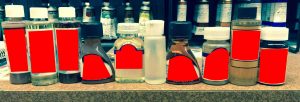 All oil is alike, right?
All oil is alike, right?
At the beginning of oil painting, when the “Old Masters” were at work, they used clear oil in their paint. How do we know this? Leonardo recorded it in his notebooks. Vasari referred to it often in his writings.
The “Old Masters” tried to keep their oil as clear and as pure as possible. Why would they do this? They knew that clear oil was the only way their paintings would look beautiful and vibrant. They knew that their paintings would stay beautiful and vibrant for hundreds of years. The proof of the pudding, of course, is in the tasting. We need only look at the paintings, which grace the walls of the world’s most famous art galleries. The “Old Masters” were correct.
If they used resins, they used them in moderation. They used, perhaps, as little as 1% in a volume of 100% oil.
Why did they use so little resin?
They knew resins would dull the painting. Resins destroy the beautiful colors that the “Old Masters” spent so long creating. Their apprentices made the paint, but it was always under the watchful eye of the Master.
Resin use was subtle in the works of Rafael, Titian and Leonardo, among others. But, as time went on, the use of resins increased. Around the time of Vermeer, resins became a popular and quick way of drying paintings.
Many of the artists at the time of Vermeer were portrait artists. They made good money at the time. They needed a quick way to turn out paintings for a “happy buck”. Wet-on-Wet and quick drying paint was the perfect solution. They weren’t worried about their paintings lasting forever.
Over the years, paint manufacturers took the viewpoint that artists wanted quick drying paints. They increased the amount of resin at the expense of the quality of the paint. This is the reason we have oils and mediums that look like this. (Our clear oil is in the middle.)
Why do we bring this up?
We think you care about how your paintings look both today and in the future. We, also, think you want your paintings to look as beautiful as they can. We think you want to have an edge on other artists. We think you want your paintings to sell while other paintings languish on gallery walls.
The secret to a beautiful painting is to return to the techniques of the “Old Masters”. That secret is a clear oil with a drier additive. More important, it is a clear oil with no harmful toxins and no odious smell.



What is your recommendation for CLEAR oil. Is there resin in colors right out of the tube?
Yes, John, one must use the EZ off product outside. Ventilation is key.
The product will remove all types of paint, thus reuse of the raw canvas is possible once it has been primed.